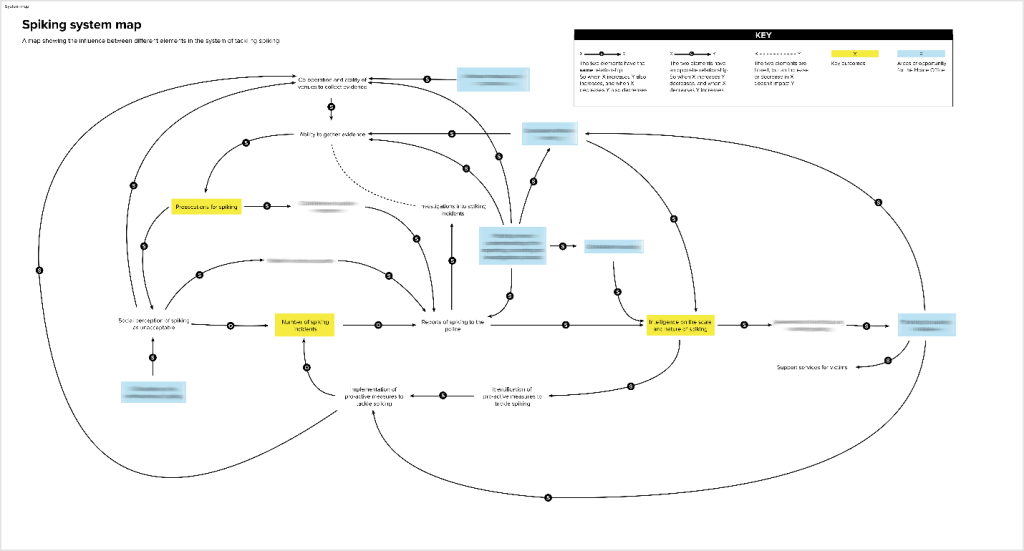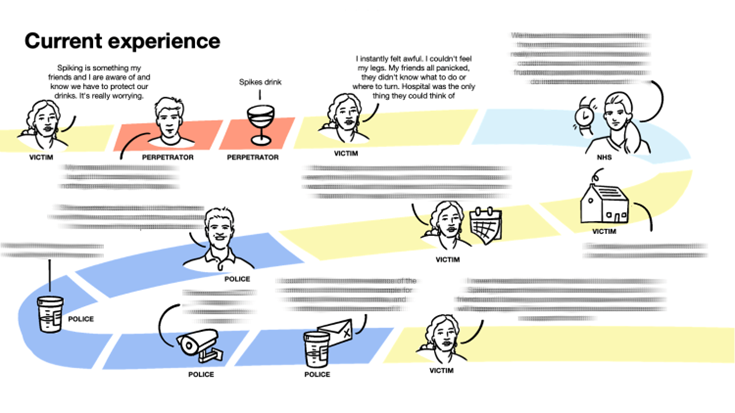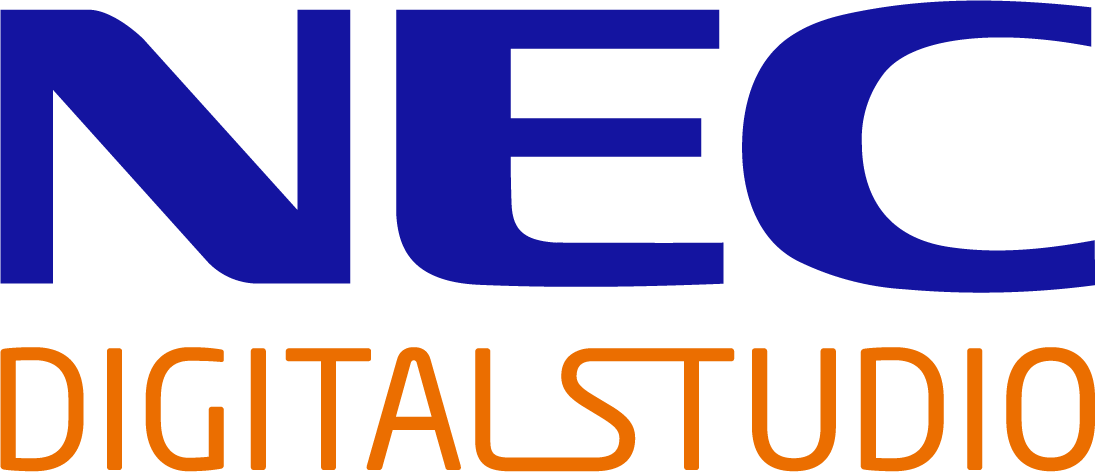The Opportunity
The Spiking Policy team at the Home Office wanted to understand how they might reduce the number of spiking incidents and increase the number of spiking prosecutions. They asked the Home Office’s Policy and Innovation Lab (CoLab) and Snook – now NEC Digital Studio – to understand the experiences of victims and those involved in tackling spiking, to identify opportunities for change. In particular, the team, commissioned by the Public Protection Unit in Spring 2022, were asked to understand the viability of a new offence to meet those aims.
The Results
We built a deep base of research which painted a picture of the experiences and processes related to spiking incidents, their human impact, and the issues surrounding them. These insights challenged assumptions and were used to identify opportunities and create a systems map, pinpointing the levers for change. The project was also chosen by the UK Government to highlight the value of design in the Public Design Evidence Review.
Project context
There was rise in drink and needle spiking in Autumn 2021 across university towns in the UK. 1,382 cases were recorded from September 2021–January 2022, most of which occurred in October 2021. A lack of identifiable suspect and insufficient evidence remained primary barriers in finding and prosecuting perpetrators. The issue received Ministerial and media attention and led to calls for a new spiking offence, with a Private Members Bill being submitted. The Minister for Public Safety had committed to updating Parliament in October 2022 on whether a new spiking offence might be appropriate.
Our approach had to be timely and sensitive to meet these policy needs, while maintaining a focus on the real people at the heart of these incidents.
Building a solid base of research
The team started with extensive desk research, to identify the underlying gaps in evidence and assumptions that needed to be tested around introducing a new offence.
We then conducted individual remote interviews with 74 participants across 9 key user groups. We worked with a research recruiter and 3rd sector organisations to ensure that our research included victims of spiking with a wide range of experiences and backgrounds, particularly those not typically included in existing research e.g. men and members of the LBGTQ+ community.
Each group shared their experiences and perceptions of spiking, allowing us to build a complete picture of the current processes, understand the human impact, and challenge the assumptions of existing research with evidence.
Protecting vulnerable participants
It was important that interviews with victims were handled sensitively and did not retraumatise participants. The team worked with our inclusive design experts, Home Office research ethics leads and Spike Aware UK to ensure our interview scripts were trauma informed. Our focus was on facilitating informed choice for participants and building a rapport and trust during the session, while empowering them to take the lead on what they felt comfortable with.
We also considered the psychological pressures on the team carrying out the research. We provided emotional support to each other throughout the interviews to monitor our resilience and wellbeing. At the end of the project a session with a psychologist was also available.
Mapping the current experience of a spiking incident
The wealth of insights from these interviews were thematically synthesised throughout the research cycle. Through a collaborative process, we were able to identify overall themes as well as specific experiences for certain groups (which supported later opportunities around targeted communications).
Policy work often sits within a complicated political landscape, where stakeholders can have competing priorities. We mapped the current organisations and initiatives involved in tackling spiking across the journey, as well as the current experience of victims of spiking. This allowed stakeholders to see the process of a spiking incident, from awareness through to potential reporting and prosecution, from a range of perspectives.

Figure 1: Example systems map (redacted for confidentiality)
Collaborative cross-government working
It was key at this stage to work with stakeholders from across government departments. Working with the Ministry of Justice allowed us to understand the potential shape of a new offence. The Department for Business Energy and Industrial Strategy helped us understand the regulation of the night-time economy. The Department for Health and Social Care enabled us to understand policy opportunities in health. Cross-government working allowed us to understand the multi-layered context that any new Home Office interventions would have to work within.
We used systems mapping to highlight how interventions in each of these areas might impact the overall response. This series of systems maps, allowed us to turn on and off interventions, supporting stakeholders to see how each would or wouldn’t lead to the key policy aims of reducing incidents and increasing prosecutions.
Putting people at the centre of policy making
As the insights from research interviews had been so powerful, we also produced more visual, more human, illustrated journey maps to show how the introduction of interventions might impact the experiences of all of those involved, from victims to frontline staff. This approach proved successful, as policy teams felt it would support them to present the narrative to ministers.

Figure 2: Example illustrated visualisation (redacted for confidentiality)
The results that were achieved
By mapping out key desirable outcomes across the spiking system, it was possible to identify which elements of the system would influence them. This led to the development of four key opportunity areas. These areas were reviewed with the Spiking Policy Team, alongside the Ministry of Justice and police, and fed into work shaping spiking policy for the future.
Changes were implemented across a number of areas including: training venue staff to gather evidence quickly; SIA mandatory training; updated statutory guidance; funding for rapid testing kits; GOV.UK support pages; police reporting tool improvements; and NPCC operations. A new criminal offence was also introduced in February 2025 via the Crime and Policing Bill.
After the close of the project in Summer 2022, the spiking policy team won a Home Office innovation award for their work including the focus on the people impacted and the systems at play.
Find out more
More and more organisations are turning to digital or digitally-enabled services, but real change starts with understanding people’s needs. If you’re exploring a similar challenge or want to know how we can help, get in touch with us through our contact us page.
Further reading
The go-to guide on all things NEC Digital Studio, our playbook gives you an in-depth insight into how we do things and how we can work together. Read the playbook.


